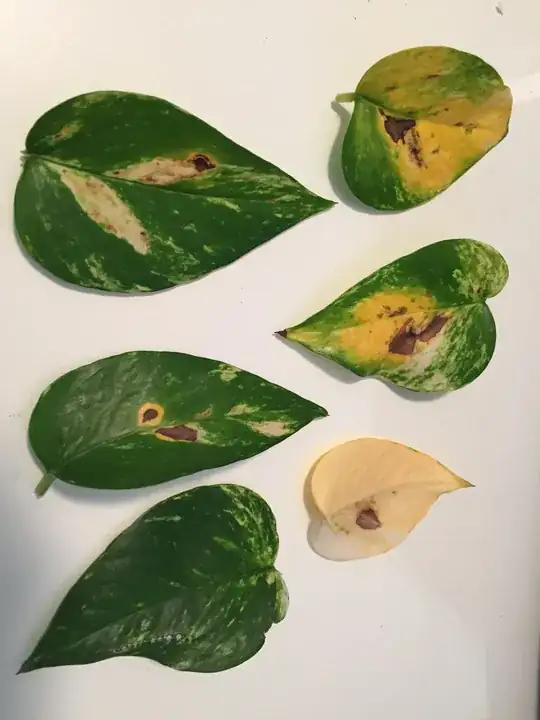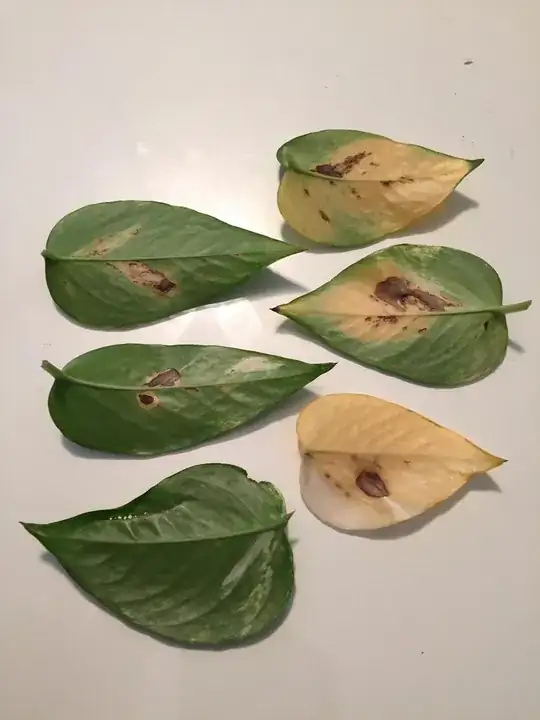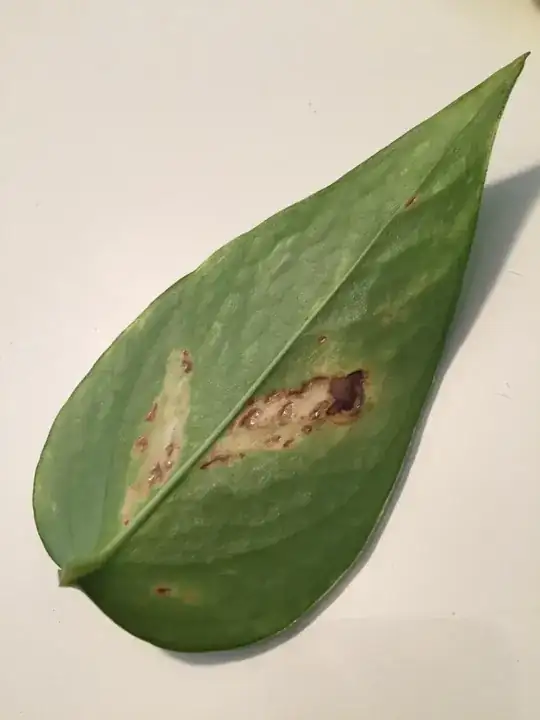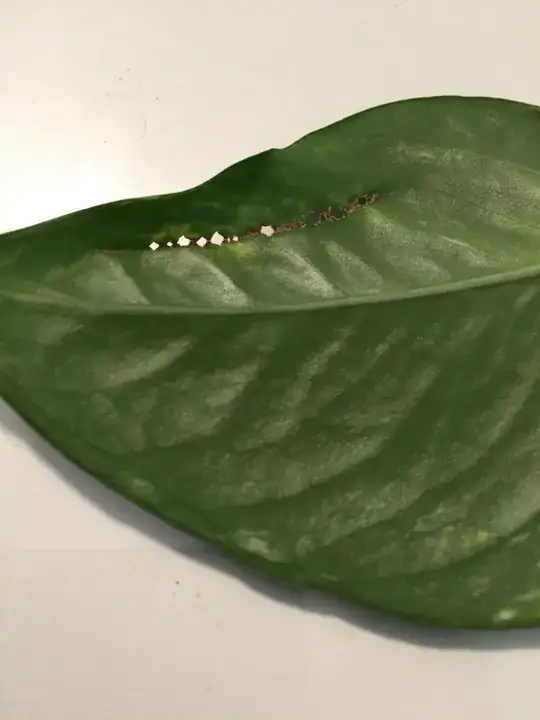What could have caused the damage in some of the leafs of this pothos? Fungus? Drought? Pest?
Factors:
- It appeared suddenly, at the end of winter time, beginning of spring
- It is an indoor plant, and the windows have been closed for several months, since it is winter.
- It is not over a heating vent
- It is not directly exposed to sunlight
- It has not been treated with any chemical
- There was a plant in the same room infested with white flies (removed now), but there are no signs of white flies in this plant.
- There was a plant in the same room infested with fruit flies (removed now), but there are no signs of fruit flies in this plant.
- Not all the leafs are affected, only 5% of them. And not even in the same stem.
- A sister plant that lives besides this one has started to show the same damage (three leafs).
- Notice the row of little holes in one of them.
- I could not see any pest or eggs on the backside of the leafs, using a magnifier.
Thanks in advance!



